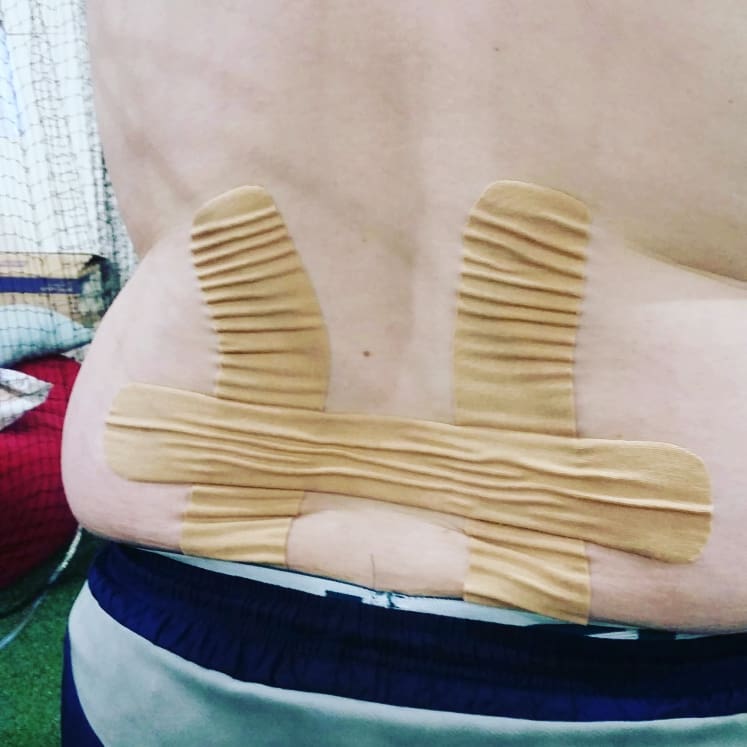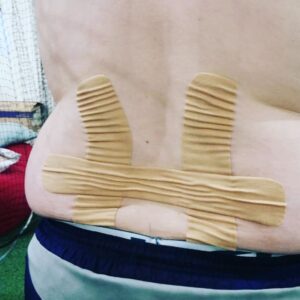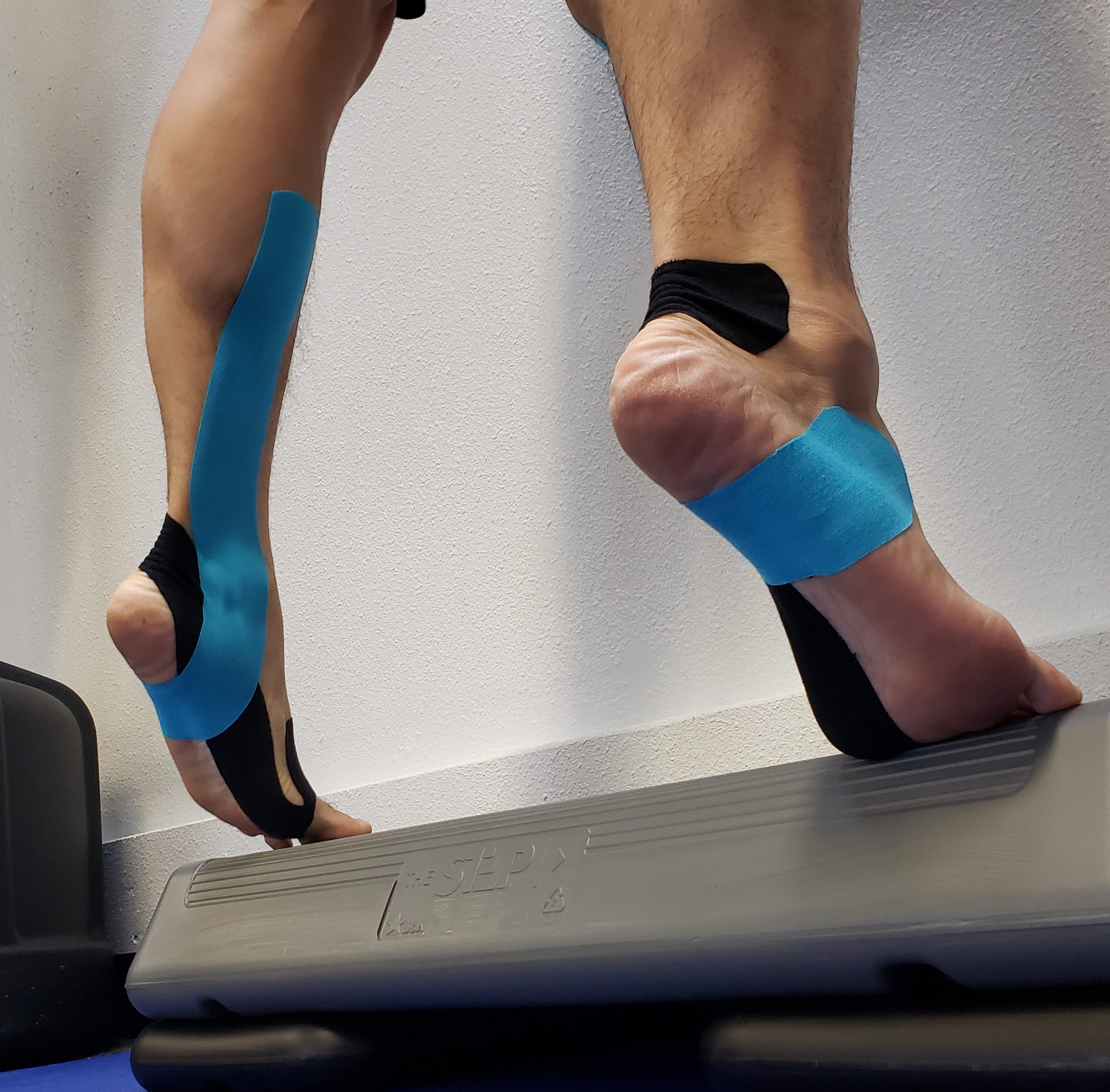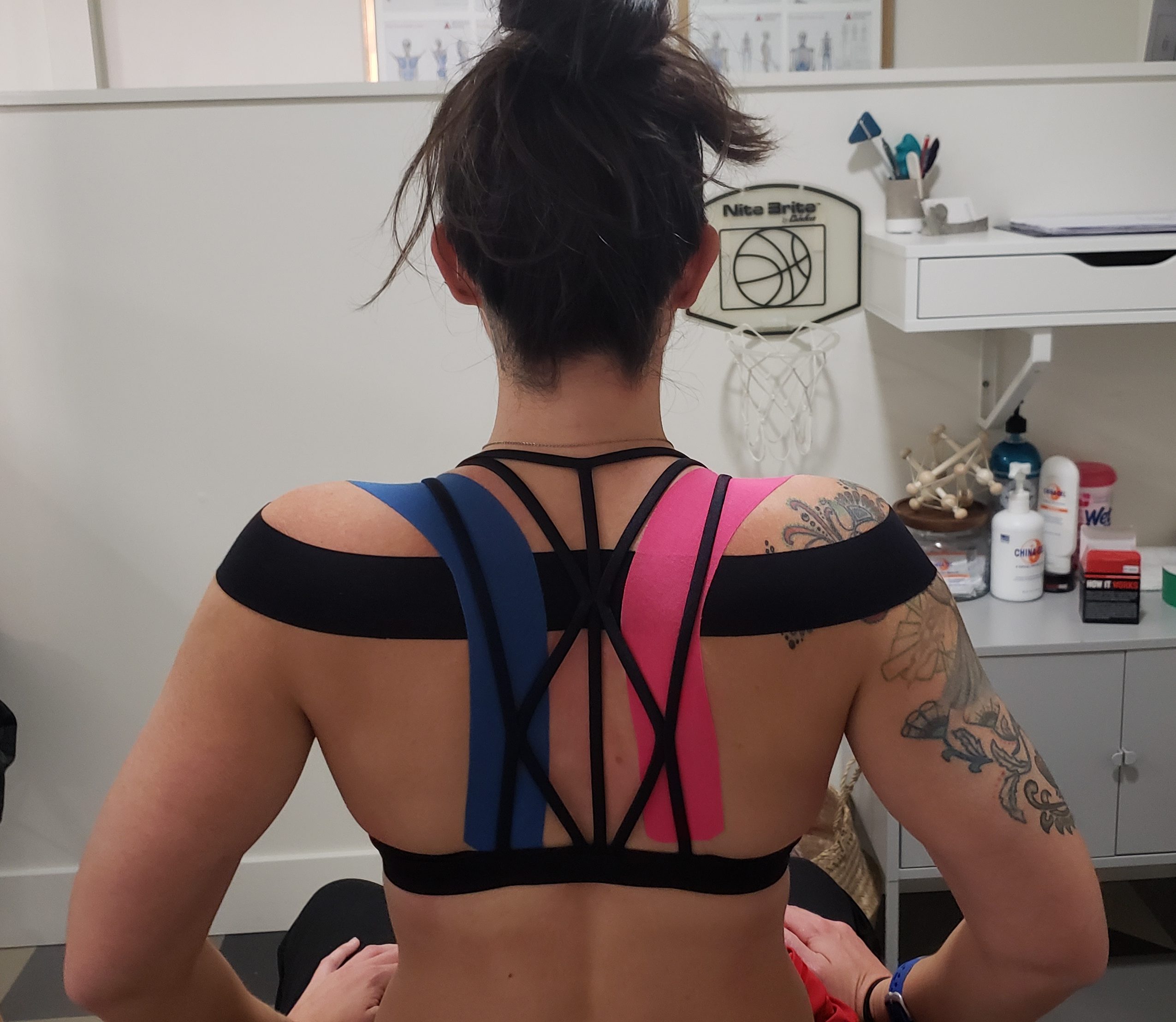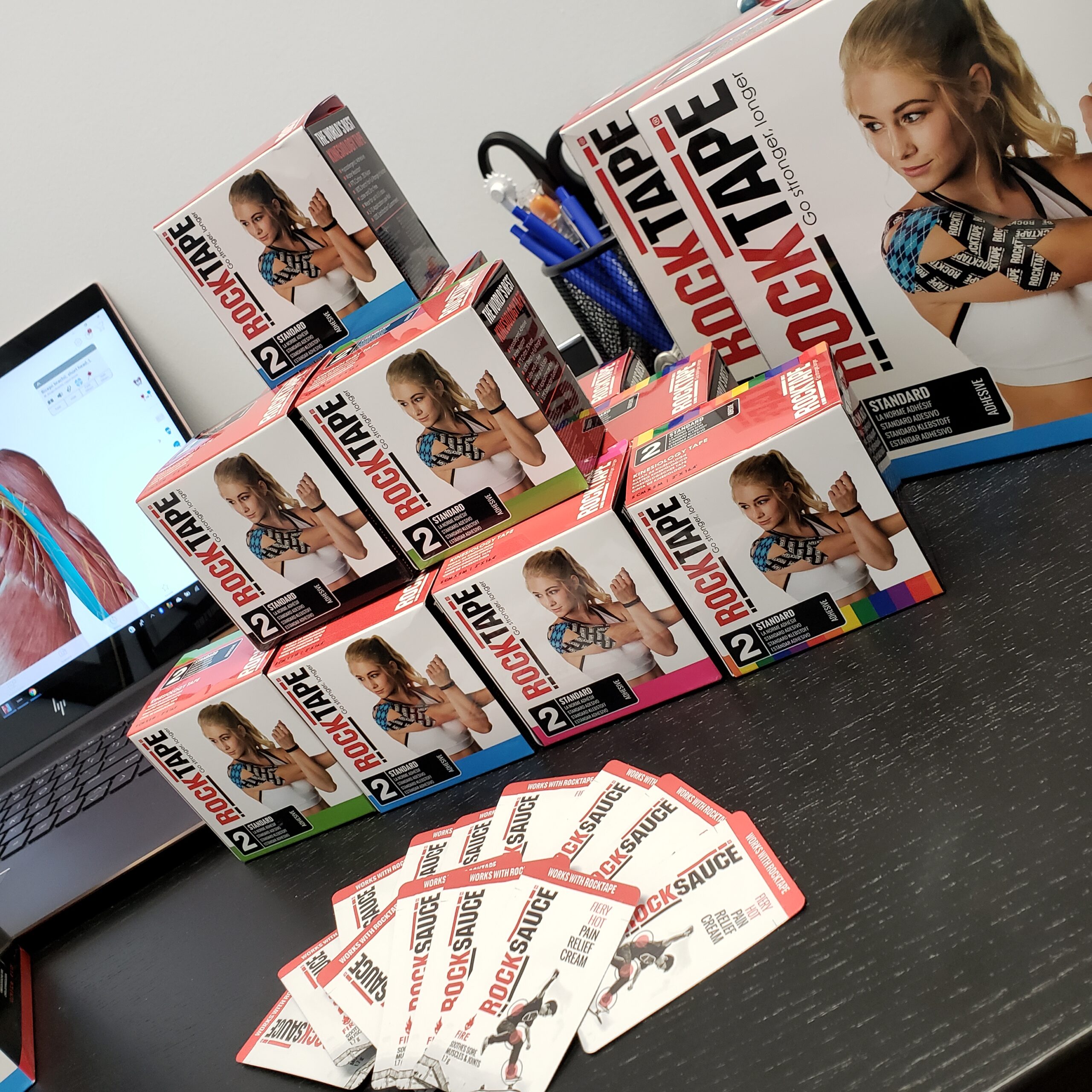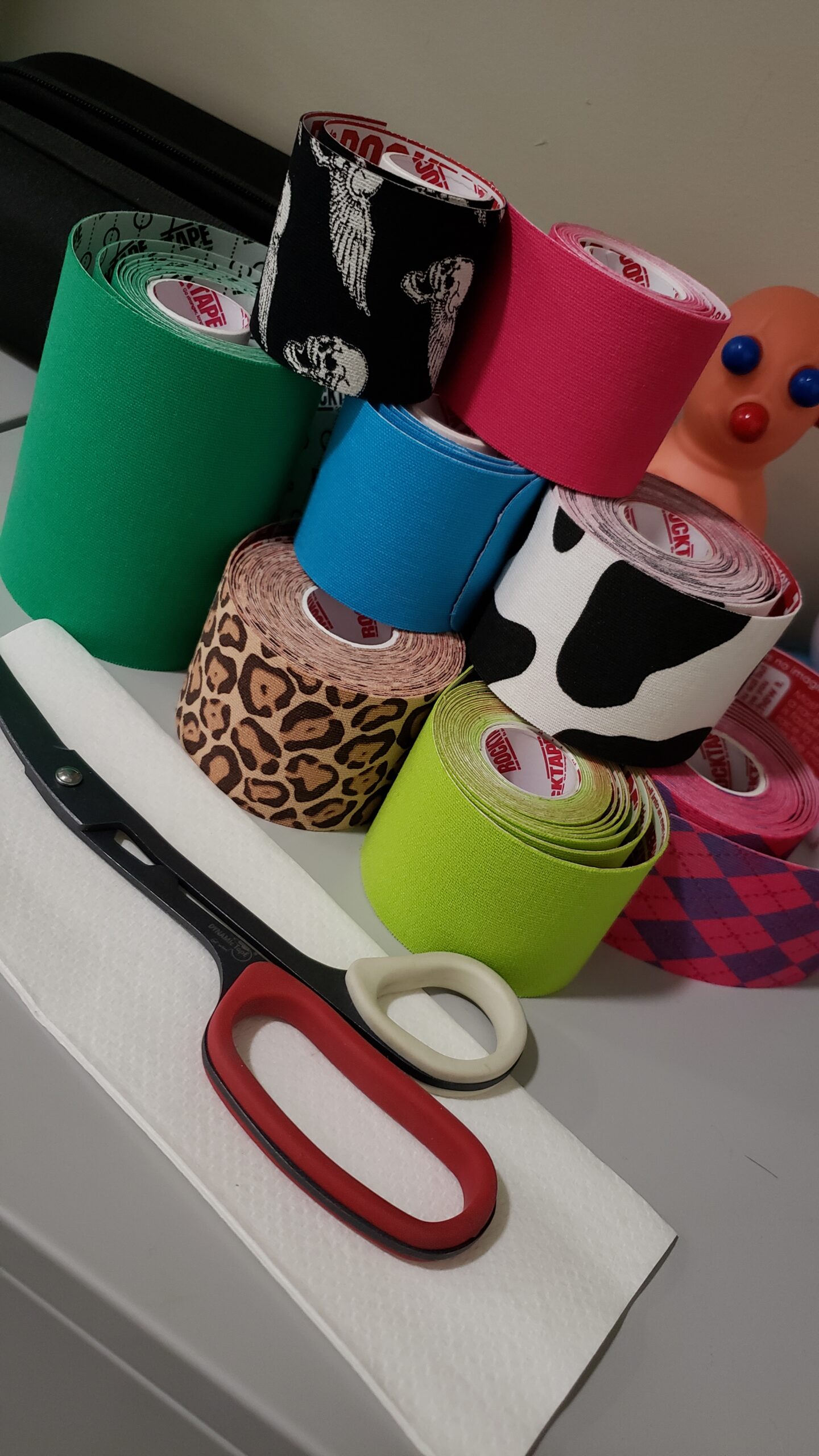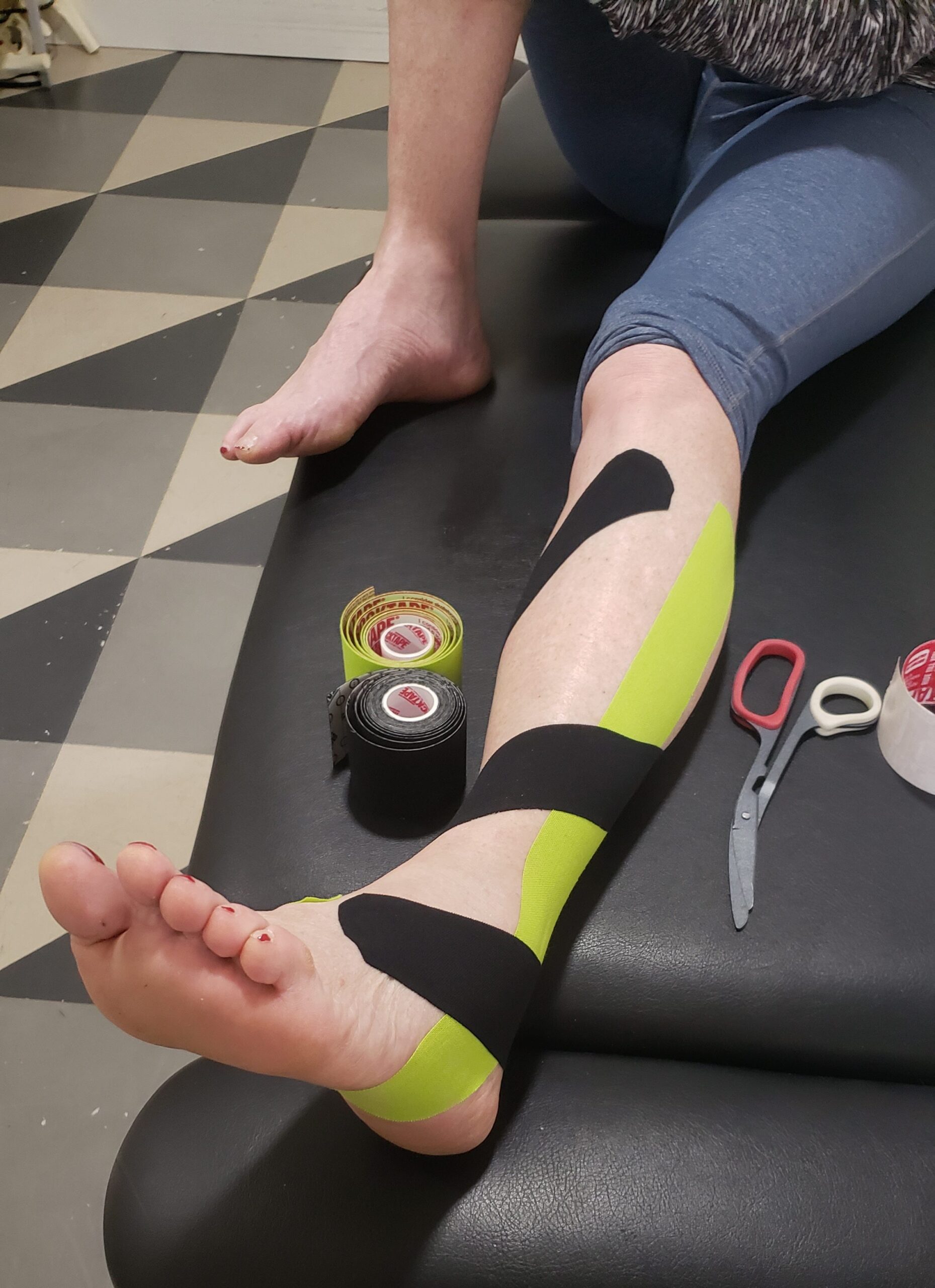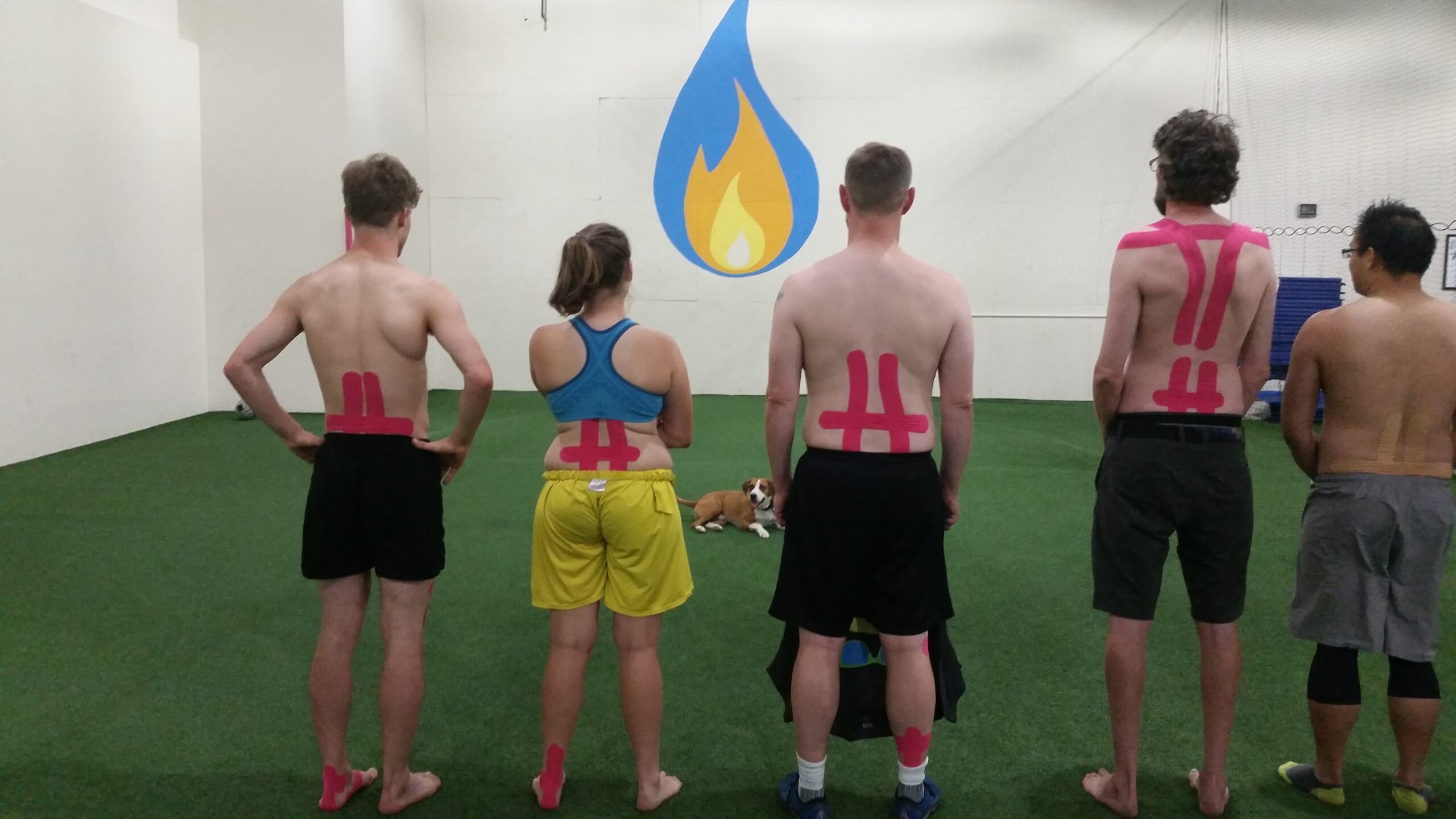Kinesiology Tape, or K-Tape is everywhere now, and it’s more important than ever to know the what, why, and how behind the “magic”. Don’t be left out of the K-Tape revolution! Myself? I’ve been dabbling with tapes for over seven years now, and have taped thousands of humans up and down the West Coast, both in clinic as patients and at events ranging from Big Sur and Rock N’ Roll Marathons to the CrossFit Games Regionals and even the Iron Man World Championships in Kona (So much fun!).
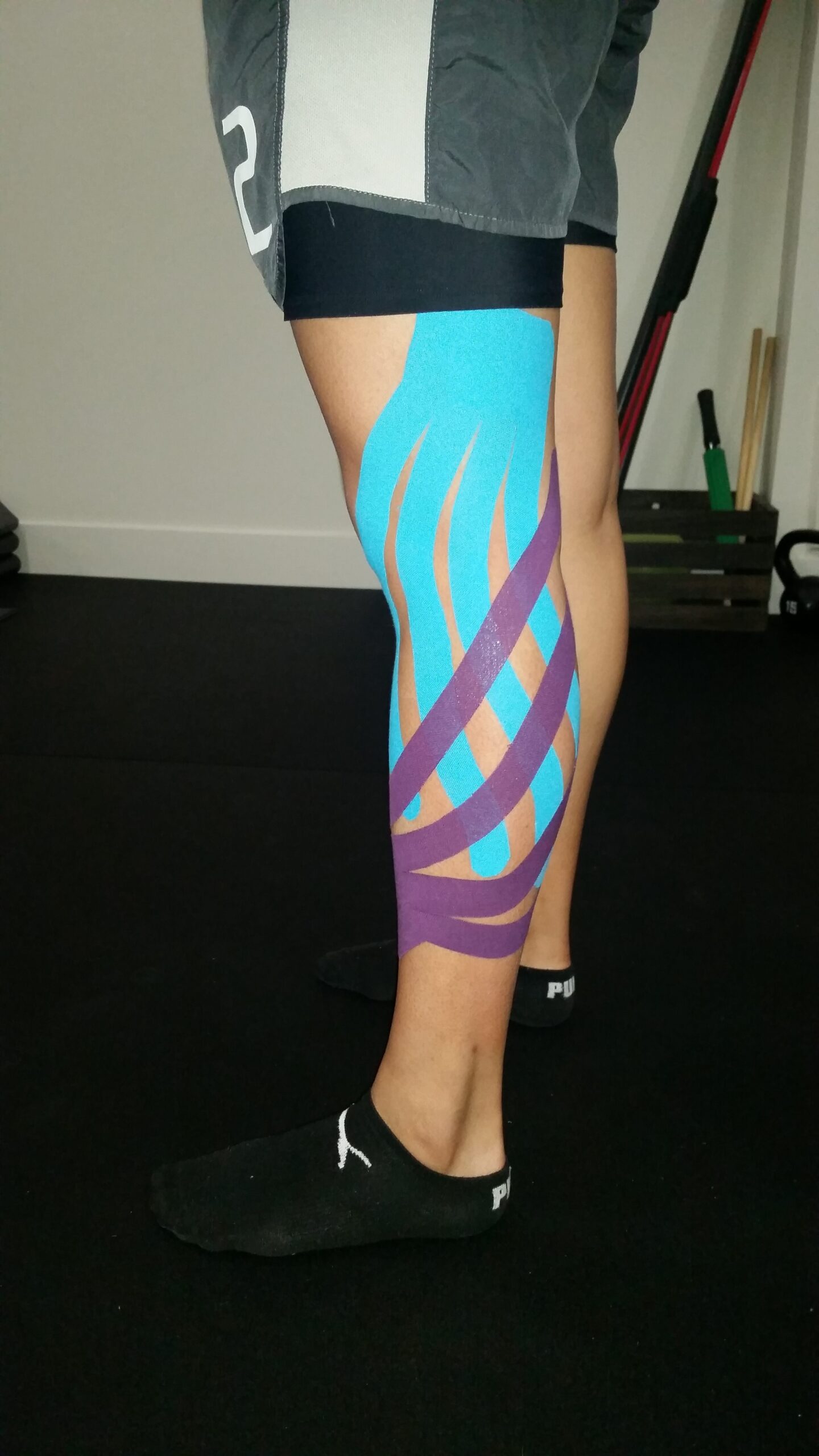 Let’s kick this off like one of my workshops:
Let’s kick this off like one of my workshops:
“K-tape is the elastic, adhesive cloth that you see all over the athletes these days. It was designed in the 1970’s by Dr. Kenzo Kase as an alternative to the traditional rigid athletic tape. When applied, the tape is designed to move and stretch with skin while decreasing pain, decreasing swelling, and improving proprioception (balance and coordination). Because of its elastic properties, we also use it for cueing posture or helping offload the stresses of a pregnant belly! There are many brands of k-tape, most notably KT, Kinesio, TheraTape, SpiderTech, and RockTape.” – Dr. Patrick Silva
How Kinesiology Tape Works
The most common comment my patient hear when people see tape on them is, “Does that really work??”
Yes. Yes, it does. Here’s how:
Reduces Swelling and Inflammation
Tape was designed to reduce swelling and inflammation by creating a tensile force on the skin (i.e., stretching it), not compressive (i.e, pushing on it, like a sleeve or brace). These micro-convolutions & corrugations (twists and channels) in the tape utilize varying pressure gradients to push and pull fluid more efficiently…and speeds up the healing process! Lucky you – it stays on 3-7 days (depending on the brand) and passively does this the whole time.
Reduces Pain
Athletes love the tape specifically for this reason. Acting on the Pain-Gate Theory (which asserts that non-painful stimuli closes the “gate” to pain impulses preventing them from being perceived by the nervous system), tape on skin is like when Mommy kisses a Boo-Boo. It’s not magic, just neuroscience.
She’s applying mechanical stress, which is overriding pain pre- and post-synaptically before the information can reach the spinal cord. Again, this tape stays on 24 hours a day and is activating this bodily mechanism constantly. Ultimately, do we move better when we’re in, or out of pain?
Other Benefits
There’s a number of other ways, depending on the application, that we can utilize k-tape. It’s great for improving proprioception, increasing stability, offloading fascial stress (load management), reducing direct friction, or even cueing posture.
Brands and Variations of Kinesiology Tape
There are many brands of K-Tape, which can be confusing to communicate, considering big names like Kinesio or KT. Some are known for bright and sparkly colors of their tape, others are known for their powerful adhesive, like RockTape, Strength Tape, or TheraTape. Every PT or Chiro you speak to will have a preference, so feel free to develop yours! Bottom line for me is always, “Does it stick?” and “Does it stay stuck?”, cuz if it ain’t stickin’, it ain’t workin’.
All Kinesiology tapes are built for movement. They’re designed to stretch 130-200% with the skin…after all, they’re just elastic, adhesive, and cloth. This is a far cry from the rigid tapes, like your classic white athletic tape, or medical tapes like Cover-Roll or Leuko Tape, all of which are NOT designed for movement.
Some companies will put “ions” in their adhesive, but for the most part, tapes are hypoallergenic. Some brands, like KT, have synthetic fibers comprising their tape, which can look pretty and claim some water resistance, but any tape will soak up a bit of water and still stick. Just pat it dry! If you have sensitive skin, there’s a tape out there for you. Some companies, like RockTape, offer a range of adhesive power with their tape product line.
Color can be a big draw for the tapes, but mostly there’s no real difference. I will let you in on a secret, though…don’t go for the brighter or lighter-colored tapes. The dye doesn’t puff the cloth fibers up as much as with the darker dyes (red, black), so the adhesive backing can be a good percentage off from tapes of the same brand. You didn’t hear that from me…. 😉
Some companies, like RockTape, provide varying sizes and cut permutations. As a doc, this is more helpful to have a 4″ and 2″ to pick from, or uncut versus precut, as each tape job I do has differing needs. Sometimes precut isn’t long enough or is too long, or if I don’t have a 4″ roll, I end up having to cut a lot of 2″ tape to compensate – I’m always looking to reduce wasted tape, so uncut varieties work best for me!
Price for your average 16-25 foot box roll sits around $10-30. Always see if your tape company offers discounts for coaches, professionals, or teams.
Common Applications of Kinesiology Tape
Every box you buy should come with an insert of basic instructions and different ways to use the tape. There’s no wrong way to tape….well, sort of. Don’t tape over your eyes or open wounds. Try to limit taping sensitive areas, like around the armpit or crease of the neck – you want to avoid tape-burn, which is like a temporary stretch mark where your skin didn’t like the tape (either a sensitive area or the tape was applied with too much stretch).
It doesn’t take long to get good at taping, and there are great classes out there you can take to be certified! You don’t have to tape all Dr. Patrick fancy-like (as depicted).
Taping application is technically in the first-aid category and doesn’t count as a treatment – (you don’t have to be a Doc to tape your people). Just stay in your professional lane insofar as touching your client is concerned.
Good luck! Reach out if you have any questions!
STILL THINKING ABOUT BEING A CERTIFIED PERSONAL TRAINER?! GET THE FREE CAREER GUIDE >>
